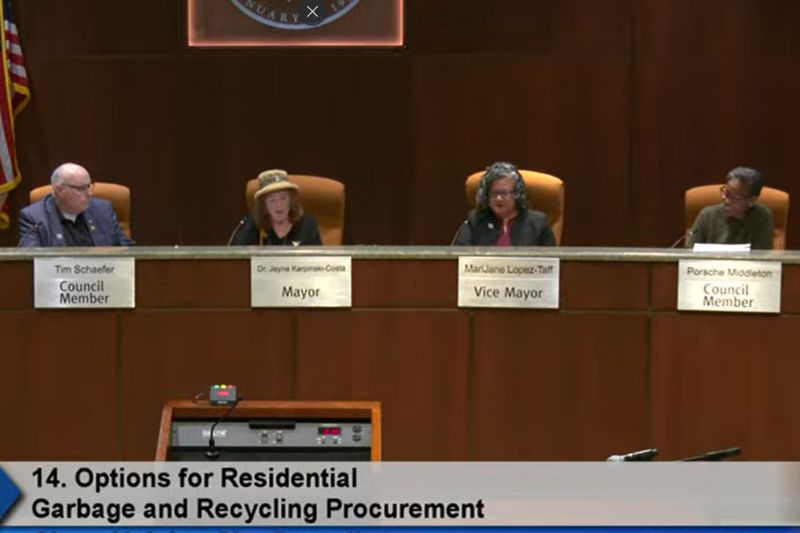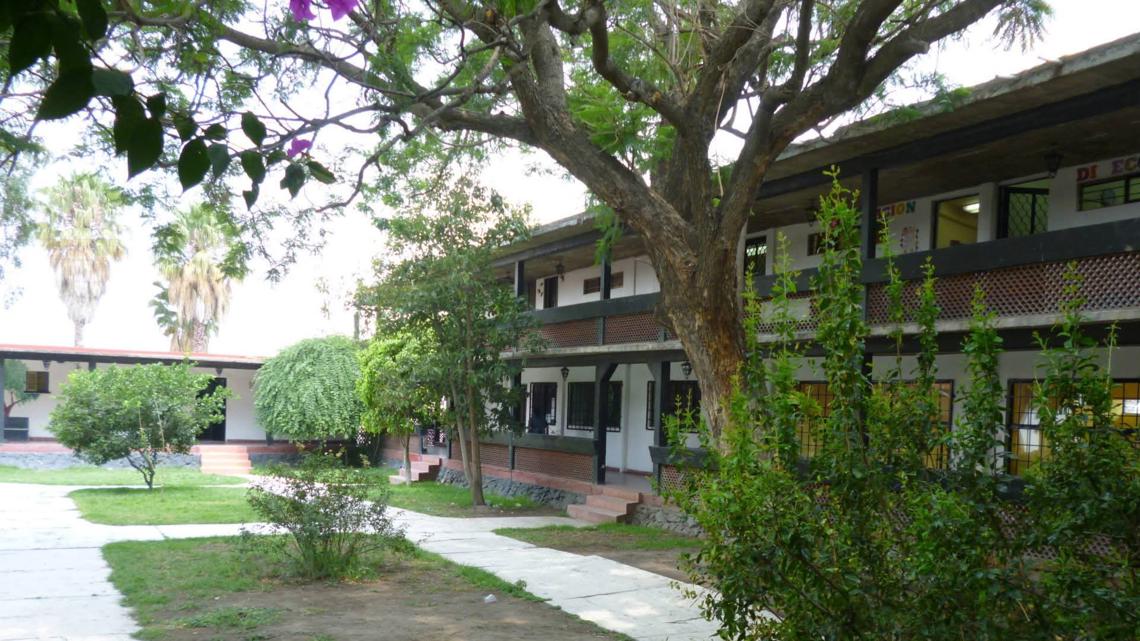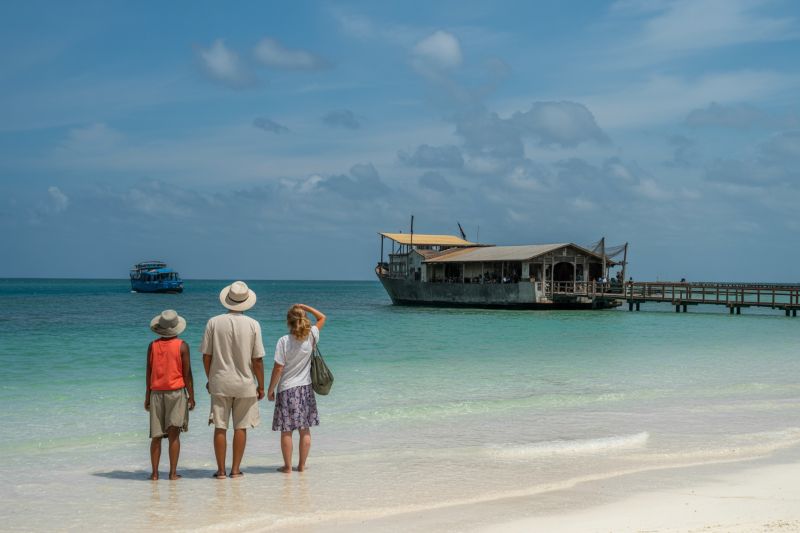Niger Airlines Takes Off Again, Providing New Pathways for Tourism and Economic Growth – Travel And Tour World

Report on the Resumption of Niger Airlines Operations and Alignment with Sustainable Development Goals
Published: October 29, 2025
This report details the operational relaunch of Niger Airlines, effective October 29, 2025, and analyzes its strategic importance in the context of national development, regional integration, and the United Nations Sustainable Development Goals (SDGs).
Strategic Relaunch and Operational Framework
After a one-year operational hiatus, Niger Airlines has recommenced domestic flight services. This initiative is a strategic effort to enhance the national aviation infrastructure, promote tourism, and address critical transportation needs within the landlocked nation.
Resilient Operational Model
To navigate financial and operational challenges, the airline has adopted a resilient business strategy that aligns with sustainable industrial practices.
- Wet-Lease Arrangement: The airline is initially utilizing a wet-leased aircraft, which includes the aircraft and crew. This model mitigates the high capital expenditure and long lead times associated with acquiring new assets, ensuring operational continuity.
- Scalable Expansion: The airline’s growth strategy is predicated on a phased expansion, carefully scaled to manage operational risks, reflecting a sustainable approach to business development in a fluctuating economic environment.
Alignment with Sustainable Development Goals (SDGs)
The resumption of Niger Airlines’ services directly contributes to several key SDGs, positioning the airline as a catalyst for sustainable development.
SDG 8: Decent Work and Economic Growth
The airline’s activities are a significant driver for sustainable economic growth and the creation of decent employment opportunities.
- Job Creation: The relaunch will generate direct employment in the aviation sector (e.g., technical, operational, and customer service staff) and stimulate indirect job growth in ancillary services.
- Tourism Sector Boost: By improving accessibility, the airline will invigorate the tourism industry, supporting local hotels, tour operators, and community-based businesses, thereby increasing national revenue.
- Enhanced Trade: Improved connectivity facilitates the movement of people and goods, fostering business opportunities and cross-border economic growth within the West African region.
SDG 9: Industry, Innovation, and Infrastructure
The airline is a core component of Niger’s national infrastructure, promoting connectivity and sustainable industrialization.
- Strengthening Critical Infrastructure: For a landlocked country with a developing road network, air travel is an essential service that connects population centers and remote areas.
- Fostering Regional Connectivity: The airline enhances Niger’s link to the wider West African region, contributing to the goals of the Single African Air Transport Market (SAATM) and promoting continental integration.
SDG 11: Sustainable Cities and Communities
Improved air transport makes cities and human settlements more inclusive, safe, resilient, and sustainable.
- Increased Accessibility: The new flight routes reduce travel times and improve access to major urban centers and secluded regions, reducing regional disparities.
- Promotion of Cultural Heritage: The airline makes Niger’s cultural and natural heritage sites, such as the UNESCO World Heritage Site of Agadez and the Aïr and Ténéré Natural Reserves, more accessible, promoting cultural tourism and supporting the local communities that preserve them.
Sectoral and Economic Impacts
Revitalizing Domestic and Regional Tourism
The reintroduction of flights is poised to unlock the full potential of Niger’s tourism sector. Increased accessibility will attract both international and domestic tourists, fostering a greater appreciation for the nation’s diverse landscapes and cultural wealth. This will, in turn, stimulate demand for hospitality and other tourism-related services, contributing to a robust value chain.
Enhancing Regional Economic Integration
Niger Airlines’ operations are vital within the broader African aviation ecosystem. By strengthening transport links, the airline supports the objectives of regional economic blocs and facilitates increased trade and collaboration among West African nations. The government’s supportive policies for the aviation sector underscore its potential as a key enabler of regional growth.
Conclusion: A Trajectory Towards Sustainable Growth
The reestablishment of Niger Airlines represents a pivotal development for Niger’s economy and its progress toward the Sustainable Development Goals. By providing essential infrastructure, creating jobs, and stimulating the tourism sector, the airline is set to become a dominant and positive force in the nation’s development. Its future success, built on a foundation of operational reliability and customer satisfaction, will be instrumental in advancing economic growth and regional integration for Niger.
Identified Sustainable Development Goals (SDGs)
SDG 8: Decent Work and Economic Growth
- The article highlights the reopening of Niger Airlines as a driver for economic growth, particularly through the tourism sector. It states that the initiative will “bolster the domestic tourism promotion” and “raise the tourism revenue in the country.” Furthermore, it directly addresses job creation by mentioning that the airline’s expansion “will require the hiring of local operational, customer care, and technical staff,” which contributes to building the local economy. The article also notes that local businesses, such as hotels and tour operators, can “expect a boost in business,” which aligns with fostering sustained and inclusive economic growth.
SDG 9: Industry, Innovation and Infrastructure
- The article focuses on the development of critical transportation infrastructure. The reopening of Niger Airlines is presented as an “advancement of aviation in the country.” It emphasizes the airline’s role in providing reliable connectivity in a “landlocked nation” where the “road network is still developing.” The text states that “air travel is the only mode of transport that can link central towns and support tourism.” The airline also contributes to regional infrastructure by playing a “significant role to link Niger to other territories in West Africa,” thereby improving transborder connectivity.
SDG 11: Sustainable Cities and Communities
- This goal is addressed through the article’s focus on making cultural heritage more accessible, which is a key part of making human settlements inclusive, safe, resilient, and sustainable. The article explicitly mentions that the airline’s routes will make sites like the “culturally rich Old Town of Agadez,” a “UNESCO World Heritage Site,” more accessible to tourists. By facilitating access, the initiative supports the preservation and promotion of cultural heritage, which is a crucial aspect of sustainable communities.
Specific SDG Targets
Target 8.9: Promote sustainable tourism
- The article is centered on this target. It details a “strategic initiative by the airline which aims to bolster the domestic tourism promotion, as well as the overall regional tourism market.” The goal is to create economic opportunities by making the country’s attractions, including cultural and natural sites, more accessible to both domestic and international tourists, which will in turn “raise the tourism revenue” and create jobs.
Target 9.1: Develop quality, reliable, sustainable and resilient infrastructure
- The content directly relates to this target by describing the revitalization of Niger Airlines to provide essential transport infrastructure. The article notes that the new flights will “decrease travel times and improve travel to the major populated cores of the nation and other highly secluded areas,” thus developing reliable infrastructure. It also touches upon regional infrastructure by highlighting the airline’s role in the “African aviation ecosystem” and its importance for “regional integration.”
Target 11.4: Strengthen efforts to protect and safeguard the world’s cultural and natural heritage
- This target is identifiable through the emphasis on increasing access to Niger’s key heritage sites. The article states that with the new flights, “tourists can now appreciate these sites with much more convenience than before,” specifically naming the “Old Town of Agadez, the UNESCO World Heritage Site,” as well as the “Termit Massif and Aïr Mountains.” By promoting tourism to these locations, the initiative creates an economic incentive for their protection and safeguarding.
Implied Indicators for Measurement
Indicator 8.9.1: Tourism direct GDP as a proportion of total GDP and in growth rate
- While the article does not provide specific figures, it strongly implies this indicator by repeatedly mentioning the economic benefits of tourism. Phrases such as the initiative will “raise the tourism revenue in the country” and “increase the nations spending economy” point directly to measuring the financial contribution of tourism to the national economy.
Indicator 8.9.2: Proportion of jobs in sustainable tourism industries
- The article implies this indicator by discussing job creation linked to the airline and tourism. It states that the expansion “will require the hiring of local operational, customer care, and technical staff” and that local tour operators can “expect a boost in business.” This suggests that a measurable outcome would be the number of new jobs created in the aviation and tourism sectors.
Indicator 9.1.2: Passenger and freight volumes, by mode of transport
- This indicator is directly implied by the core subject of the article: the resumption of flights. The success of the airline’s reopening is inherently tied to the number of passengers it serves. The text mentions the goal is to “fulfill the needs of both domestic and international travellers,” which can be measured by tracking passenger volumes on these new routes.
SDGs, Targets, and Indicators Analysis
| SDGs | Targets | Indicators |
|---|---|---|
| SDG 8: Decent Work and Economic Growth | 8.9: By 2030, devise and implement policies to promote sustainable tourism that creates jobs and promotes local culture and products. |
|
| SDG 9: Industry, Innovation and Infrastructure | 9.1: Develop quality, reliable, sustainable and resilient infrastructure, including regional and transborder infrastructure, to support economic development and human well-being. |
|
| SDG 11: Sustainable Cities and Communities | 11.4: Strengthen efforts to protect and safeguard the world’s cultural and natural heritage. |
|
Source: travelandtourworld.com
What is Your Reaction?
 Like
0
Like
0
 Dislike
0
Dislike
0
 Love
0
Love
0
 Funny
0
Funny
0
 Angry
0
Angry
0
 Sad
0
Sad
0
 Wow
0
Wow
0













































































